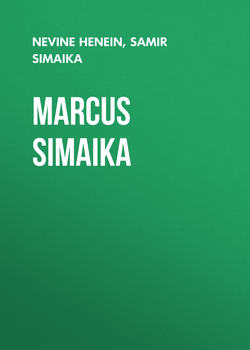Читать книгу Marcus Simaika - Samir Simaika - Страница 10
PREFACE Samir Simaika
ОглавлениеIinherited the memoirs of my grandfather, Marcus Pasha Simaika, from my father, his eldest son, some forty years ago. At that time, I only rapidly skimmed through them, not having the time to read them carefully, being very busy as an obstetrician and gynecologist with a large practice that I had taken over from my maternal grandfather, Professor Naguib Pasha Mahfouz,1 at his retirement. When I finally diminished my work in preparation for my own retirement, I decided to read these memoirs, which had never been published, more thoroughly, and I discovered a wealth of information regarding an era spanning nearly a century, from the mid-nineteenth century to the mid-1940s, a crucial time in the modern history of Egypt. Simaika was an eyewitness to many important events that eventually changed the course of the history of Egypt.
This book is based in large part on the memoirs and documents in my possession. I have expanded on the political and historical backgrounds to events related to this period and described in the memoirs. I have also included some chapters from his memoirs that are of historical interest, such as that on old Coptic customs that Simaika published in the British Archaeological Journal in 1897, and that on the Coptic–Ethiopian dispute over the Deir al-Sultan monastery in Jerusalem, in which he was deeply involved as vice president of the Coptic community council at the time. I have also included a few pages on the Coptic and Muslim congresses of 1911, which he considered to have first sown the seeds of serious dissent between the two communities, and his description of the events that led to the convening of these congresses. I have also added a section on the British administrators during this period of time, whom Simaika knew well and had to deal with, and his impressions of some of them.
Reading this book, it must be noted that these memoirs were written over seventy years ago, and some issues may be irrelevant today, others divisive. Although some of his judgments may seem harsh, some of his stands abrasive, and some of his positions arguable, I did not think it my right to modify or omit.
It must be remembered that Simaika, almost singlehandedly and in spite of overwhelming apathy and opposition, saved Coptic history, Coptic culture, and Coptic art from decay and loss. The legacy of Coptic art, with its rich history of monuments, manuscripts, and artifacts, might have been lost to posterity were it not for the passion of this man. He maneuvered endlessly between the patriarch and the church hierarchy, the Coptic community council, the British Agency, the government, and the Committee for the Preservation of Arab Art, to bring them together in his fight to save Coptic heritage. He shed light on centuries of Christian Egyptian history that had been neglected by ignorance or otherwise belittled and despised.
He was one of the very few Copts who reached high position in the state, yet devoted himself selflessly and wholeheartedly to the welfare of his community, fighting fiercely and courageously for the rights of his fellow Copts, in marked contrast to most Copts, who, on reaching high position, turned their backs on, and distanced themselves from, their Coptic community and their Coptic origins.
When he lost his wife in a car accident, he came to live with my father, and I was privileged to have known him as a child for the first eight years of my life. I remember him as an elderly gentleman with very poor eyesight who would take me to accompany him every morning, when I was not at school, to the Coptic Museum, and in the afternoons to the Pharaonic Gardens in Zamalek. In the evenings, he would listen to the radio or dictate his memoirs in his preferred language of English to Mrs. Naguib Boutros Ghali, daughter-in-law of Prime Minister Boutros Pasha Ghali.
He died on October 2, 1944, in Alexandria at the age of eighty.
After his death, a new extension to the museum was formally opened in 1947 and Simaika’s bust unveiled. On either side of the entrance to the main building is a big marble plaque. On one of these is an inscription in Latin:
Si monumentum requiris circumspice
Translated, this reads, “If you seek a memorial, look about you,” a fitting tribute to this outstanding man who was fearless and immensely proud of being an Egyptian and immensely proud of being a Copt.
This was a brave man who battled fiercely for his principles and his beliefs. It can rightly be said of him, “He has fought the good fight, he finished his course, he kept the faith.”
May God rest his soul in peace.
